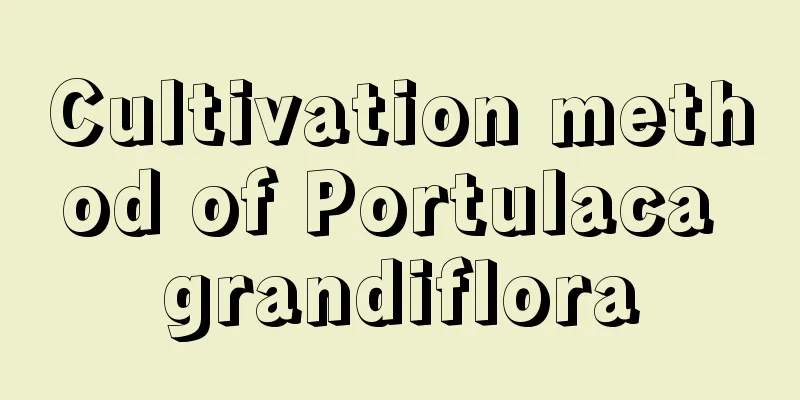Cultivation method of Portulaca grandiflora

1. Maintenance methods1. Temperature: Portulaca oleracea prefers a warm, slightly higher environment. Specifically, the temperature between 20 and 30 degrees is more suitable. In addition, the temperature for breeding can also be maintained within this range. In addition, a too hot environment is harmful to it, so you can be a little careful. 2. Light: Portulaca grandiflora requires more sunlight. Its flowers have a special characteristic: they will only bloom after seeing the sunlight; if it is at night or on a cloudy day when there is insufficient sunlight, the flowers will not bloom. Therefore, in order to ensure that it blooms normally, try to place it in a location with good sunlight. 3. Watering: Portulaca oleracea requires a lot of water during the growing season, but water cannot accumulate. Especially during the flowering period, water cannot be lacking. After late autumn, the growth rate will slow down and you won’t need to water it too much. 4. Fertilization: Liquid fertilizer needs to be used regularly, but the interval does not need to be too short, once or twice a month will be enough. 2. Breeding techniques1. Reproduction: It can be done by sowing. However, its seeds are relatively small, so you need to choose the appropriate one for sowing. Sowing can be done in spring, summer and autumn. The row spacing can be about six centimeters, and the plant spacing can be about five centimeters. After sowing, you can cover it with a thin layer of soil, or you can leave it uncovered. Keep the temperature above 20 degrees. 2. Repotting: It does not have particularly high requirements for soil and its ability to tolerate barrenness is very strong. Therefore, the interval between repotting can be slightly longer, at two or three years, but it cannot be completely unrepotted. You can choose sandy soil with good drainage, which will have a better effect. After repotting, place it in a cool place temporarily to allow it to adapt. 3. Problem diagnosis and treatment1. Disease: It may be caused by anthracnose, and the damaged parts are mainly the leaves. You need to cut off all the leaves and then use chlorothalonil. There is also "powdery mildew", which is very common on leaves and flowers, and can also be treated with chlorothalonil. 2. Pests: Relatively speaking, there are not too many. There may be "scale insects" and the like. You can spray some preventive agents in advance. IV. Other issues1. Toxicity: It is non-toxic and has medicinal and edible value. 2. Can it be raised at home? It can also be used for viewing and as a potted plant and can be raised at home. |
<<: How to grow the hanging water tower flower
>>: How to grow lantern flower
Recommend
What is the meaning of Milan flowers?
1. The beauty of obscurity One of its flower lang...
Cultivation methods and maintenance of old purslane piles
How to grow purslane into an old pile When Pursla...
How to prolong the flowering period of daffodils? When do daffodils bloom?
1. How to prolong the flowering period 1. Control...
How many colorful peppers should be planted in one pot?
How many colorful peppers should be planted in on...
Purple cabbage planting time and method
Purple cabbage planting time Purple cabbage can b...
How to propagate shrimp orchid
Fall breeding Breeding area When propagating Shri...
Yushu winter maintenance management methods and precautions (how to keep warm to survive the winter safely)
Is Yushu cold in winter? Jade tree is a succulent...
The difference between cinnamon and cinnamon
1. Difference of blades The leaves of cinnamon ar...
When to harvest onions
Onion harvest time Generally, green onions mature...
Smooth sailing hydroponic cultivation methods and precautions hydroponic tutorial
Smooth Sailing, also known as White Peace Lily, i...
How to make dried eucalyptus leaves
1. Use the hanging air drying method Air drying i...
The difference between Chinese rose and rose
1. Difference of blades The base of the rose leaf...
Lotus fertilization method, what fertilizer to use
1. Fertilization time Lotus likes fertilizer and ...
When to water flowers in winter
Why is it important to water flowers in winter? I...
How to grow worry-free flowers
1. Maintenance methods 1. Temperature: It has ver...









